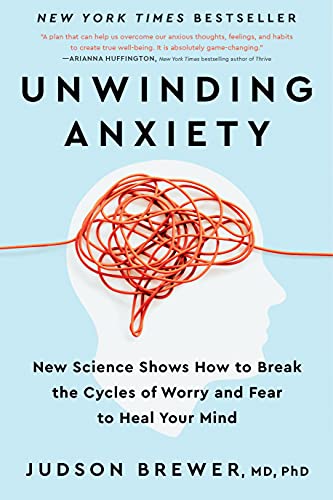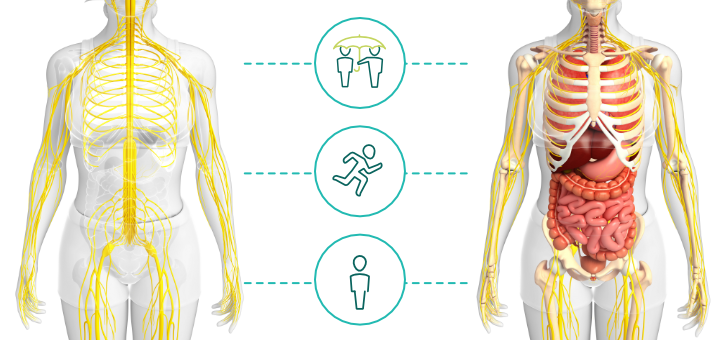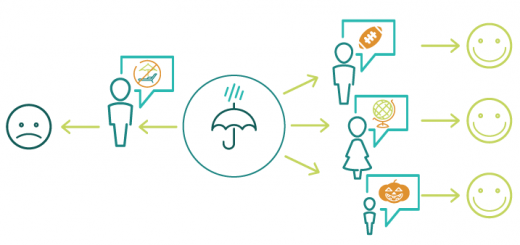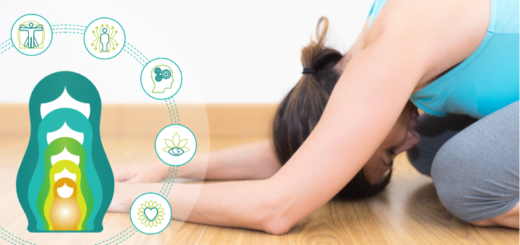Don’t worry, be happy? Can we choose our response to anxiety?
0Many years ago, I remember stepping out of my house on a beautiful sunny summer day and randomly thinking, “What a beautiful day! Nothing bad can happen on a gorgeous day like this!” At that exact moment, my husband had pulled up to the curb in a mangled car – somebody had rear-ended him and pushed him into the car in front. Thankfully, my husband was OK, the car was eventually fixed, but my brain has learned an interesting lesson. From then on, every time I think, “What a beautiful day!” it tries to helpfully serve me the image of the wrecked car and point out, “Remember what happened when you weren’t worried? Maybe if you worried a bit more, that wouldn’t have happened.” Following that experience, my mind tried to establish a neural habit of Notice a beautiful day > Start worrying about something bad happening > Feel anxious. I had to actively resist the formation of that mental loop; otherwise, I would never be able to enjoy a beautiful day without a tinge of anxiety.
Anxiety can become a mental habit that gets ingrained in our minds and continues to play out below our conscious awareness. It usually runs in a predictable pattern, just like it did in my example above:
- Trigger (Notice a beautiful day)
- Behavior (Worry about something bad happening)
- Result (Feel anxious)
A trigger can be anything that we read, see, hear, think, or experience, and it doesn’t necessarily have to be negative. Trigger usually links a present experience to some other experience in the past and awakens something within us that is unsettling and requires a response. We have an itch to do something, to react in some way.
Behavior is how we act following the trigger. Most of the time, that action is reactive, unconscious, and habitual. We procrastinate, overeat, flip out, withdraw, start an argument, scroll through social media, worry, etc.) The behaviors we automatically engage in as a response to the trigger are most often meant to dull the intensity of the trigger, discharge it somehow, or distract ourselves from it. Curiously, worrying is a mental activity, not a physical action, yet it is still a behavior; it makes us feel as if we’ve done something. Worry is not the same as anxiety, which is a mental-physiological state. Worry usually follows anxiety. Worry gives us an illusion of doing something about our anxiety, but it often leads to more anxiety; we get stuck in a vicious cycle: Anxiety > worry > more anxiety.
The result is how that behavior serves you afterward. More often than not, the result of unconscious behavior initiated by a trigger is that you feel guilty, bloated, angry, hurt, drained, anxious, etc. You would expect the result to be rewarding; if you continue to engage in the same behavior over and over again, you must be getting something out of it. And it is possible that at some point, you did. Maybe in the past, you felt blue > ate some ice cream > felt a little better. Then you did it again and again, looking to replicate the experience, but you needed more ice cream every time to get similar results. Now you are eating a tub of ice cream, it doesn’t work the same way, but you keep doing it because the habit is already formed. Or maybe at some point, you were bored > scrolled through your Twitter feed and saw something funny or inspiring > felt uplifted. Now you reach for your phone every time you are bored > lose two hours to mindless scrolling > feel depleted and restless afterward.
The main quality of habitual mental loops like these is that they are unconscious. It means that your brain’s prefrontal cortex (PFC), which makes conscious decisions, goes offline. Then it stands to reason that if you bring your PFC online and shine the light of awareness on each of the three stages of this process, you would be able to
- Become aware of your triggers
- Notice what kind of results your reactive behavior actually leads to
- Choose behaviors that serve you better.
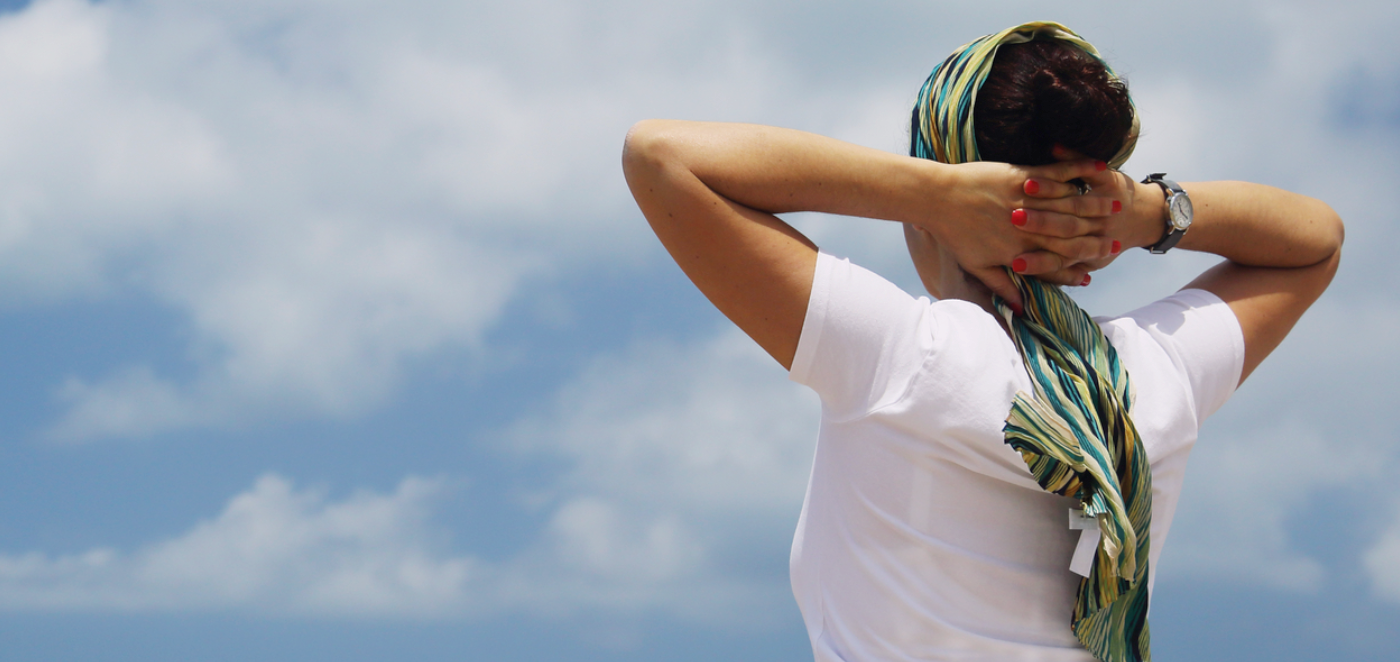
In fact, we can continuously train our ability to “bring PFC online” in our yoga practice when we bring conscious attention to what we do and how it feels. It is just as easy to fall into habitual mental patterns in your yoga practice and go through the motions without paying much attention to what happens inside. If you go on autopilot, it significantly limits the benefits you get from your practice. If, instead, you focus on how each movement, breathing technique, mudra, and so on, viscerally feels in your body, you will learn to become more conscious of your sensations and mental patterns. Once you bring that awareness to your life off the mat, it will become easier to spot your habitual reactions to triggers, notice how they make you feel, and choose behaviors that make you feel better.
Yoga is uniquely positioned to be very effective in training our awareness because, in yoga, we approach it from within the body. Generally, we cannot think or will our way out of destructive mental loops; we can only become aware of the visceral response they create within our bodies and then consciously choose behaviors that make us feel better. I used the same strategy for dealing with the budding mental habit I described at the beginning of this post. I consciously replaced the behavior of worrying about what could possibly go wrong on a beautiful day with the behavior of lifting my face toward the sun, feeling the warmth on my skin, soaking in the smells and sounds of the day, and noticing how that feels within my body. As you can imagine, the experience of soaking in the day feels much better than the visceral experience of anxiety. After doing it many times with conscious awareness, my mind now automatically prefers the more pleasant behavior. This happens because our brains constantly update the reward value of our experiences looking for a bigger and better offer. We will discuss bigger, better behaviors we can offer our brains next time – tune in!
[jetpack_subscription_form]
If you want to get much more detail on the inner workings of your brain, mental loops, anxiety habits, and ways to deal with them, please check out an excellent and accessible book Unwinding Anxiety: New Science Shows How to Break the Cycles of Worry and Fear to Heal Your Mind by Judson Brewster (affiliate link).

